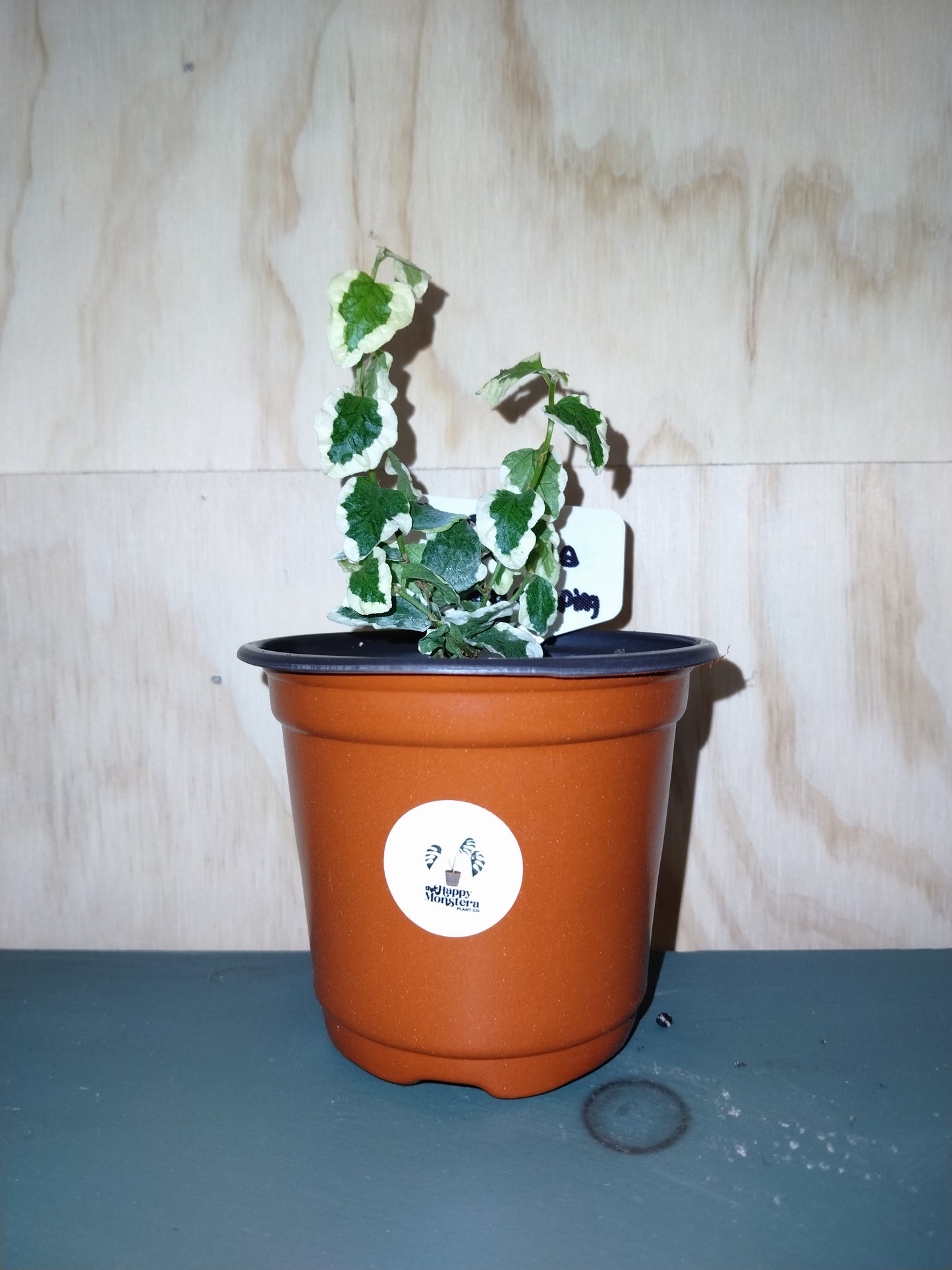The Happy Monstera Plant Co
Creeping fig
Creeping fig
Couldn't load pickup availability
General Description
Ficus pumila, commonly known as Creeping Fig, is a vigorous, fast-growing climbing or trailing vine. Native to East Asia, it’s popular for covering walls, trellises, or cascading from hanging baskets. Its small, heart-shaped leaves give it a delicate, textured appearance.
Appearance
-
Leaves: Small (0.5–1 inch), bright green, heart-shaped; juvenile leaves are smaller and more vibrant, while mature leaves on older vines are slightly larger and tougher.
-
Growth Habit: Vigorous climber using aerial roots to cling to surfaces. Indoors, it can trail from pots or climb trellises.
-
Size: Can grow 10–20 feet long indoors under ideal conditions, and much longer outdoors.
Light Requirements
-
Prefers bright, indirect light.
-
Can tolerate low light, though growth slows and leaves may become sparse.
-
Avoid direct sunlight, which can scorch leaves.
Watering
-
Keep soil consistently moist, especially during the growing season.
-
Allow the top 1 inch of soil to dry out between waterings in winter.
-
Overwatering can cause root rot; underwatering may cause leaf drop.
Humidity & Temperature
-
Humidity: Prefers moderate to high humidity; misting can help indoors.
-
Temperature: Thrives in 60–85°F (16–29°C). Sensitive to cold drafts or temperatures below 50°F (10°C).
Soil & Fertilization
-
Soil: Well-draining, fertile potting mix.
-
Fertilizer: Feed every 4–6 weeks during spring and summer with a balanced liquid fertilizer. Minimal feeding in fall/winter.
Pruning & Maintenance
-
Prune to control size, shape, or encourage bushier growth.
-
Remove dead or yellowing leaves.
-
Can be trained along walls, frames, or allowed to cascade from containers.
Propagation
-
Easily propagated via stem cuttings in soil or water.
-
Keep cuttings warm, humid, and bright until roots develop.
Common Issues
-
Leaf drop: Caused by sudden environmental changes, overwatering, or low humidity.
-
Pests: Susceptible to spider mites, mealybugs, and scale.
-
Root rot: Often from poorly draining soil or excessive watering.
Extra Tips
-
Ideal for vertical gardening, wall coverage, or hanging baskets.
-
Can attach itself to walls with aerial roots but may leave marks if removed.
-
Prefers consistent care; abrupt changes in light or watering can stress the plant.
Share

